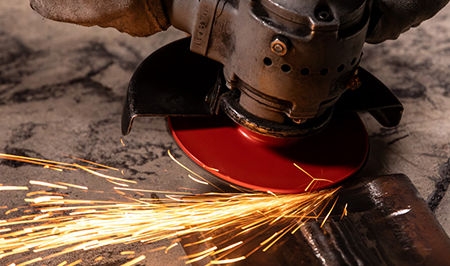
Did you know that damaged goods during transportation cost businesses millions of dollars each year? In fact, research suggests that nearly 11% of cargo damage results from improper load securing during transit. This statistic underscores the critical need for companies to implement reliable yet cost-effective methods to protect their goods. Choosing the right cargo-securing methods can significantly reduce financial losses, enhance customer satisfaction, and improve overall operational efficiency. In this article, we’ll explore five cost-effective ways to secure cargo during transportation. These methods are not only budget-friendly but also provide robust solutions to safeguard shipments from damage. Whether you're transporting heavy machinery, fragile electronics, or bulk goods, these strategies will help you balance cost and security.
Often referred to as inflatable airbags, their purpose is to occupy the empty spaces left by cargo items in trucks, rail carriages, or shipping containers.These bags guarantee that cargo stays intact upon arrival by preventing shifting, tipping, or dropping during transportation.
In contrast to conventional techniques like foam padding or wooden crates, dunnage bags are a less expensive choice. They are an affordable long-term solution because they may be reused several times. They also inflate quickly and easily, which lowers labor expenses and improves loading efficiency.
Versatility: Suitable for various industries, including automotive, electronics, and furniture. High Load-Bearing Capacity: Can support heavy weights and maintain stability even in rough transit conditions. Eco-Friendly Options: Available in recyclable materials, offering an environmentally friendly option for businesses.
Many industries, such as automotive and electronics, use dunnage bags to secure fragile components, while furniture manufacturers rely on them to keep items stable and prevent scuffs or scratches.
Stretch wrapping involves using a plastic film to tightly secure goods on pallets, keeping them stable during transportation. This method not only stabilizes the load but also protects it against dust, moisture, and tampering.
Cost Efficiency
Stretch wrap is relatively inexpensive and can be applied quickly, reducing both material and labor costs. Moreover, it offers excellent value for money by providing comprehensive protection at a low cost.
Application
Stretch wrapping can be applied manually or using automated machines, making it suitable for small-scale operations as well as large logistics businesses. It’s particularly effective for securing irregularly shaped items and mixed loads.
Tips for Effective Use
Choose the appropriate film thickness based on the weight and nature of the cargo. Consider using UV-resistant stretch wrap for outdoor storage and transport.
Strapping and banding are techniques used to bind cargo together using materials like plastic, nylon, or metal. These methods are ideal for keeping items firmly in place, reducing the risk of shifting or damage during transit.
Cost Efficiency
Both strapping equipment and materials are affordable and widely available. Plastic strapping is lighter and more cost-effective, while metal straps offer greater strength and durability.
Benefits
Strong Load Support: Holds heavy goods securely, minimizing movement. Flexibility: Suitable for a range of applications, from small cartons to large machinery.
Limitations
While metal strapping offers superior strength, it may be costlier and heavier, making plastic straps a preferred option for lighter, less demanding loads.
Foam cushioning involves using padding materials to create a protective barrier around delicate items. It’s especially useful for goods prone to breakage, such as glass, ceramics, and electronics.
Cost Efficiency
For objects that need further protection, foam is a cost-effective option even if it may initially cost more than other materials. Long-term savings are guaranteed by foam cushioning, which guards against costly damages.
Applications
Ideal for industries dealing with sensitive equipment, medical devices, and high-value electronics. Foam inserts, corner protectors, and cushioning sheets can all be customized to fit specific shapes and sizes.
Environmental Considerations
To minimize environmental impact, businesses can opt for recyclable or reusable foam materials, ensuring a sustainable approach to cargo protection.
Anti-slip mats and Rubber Sheets
Anti-slip mats and rubber sheets increase friction between cargo and the vehicle’s surface, preventing slippage and sliding during transport. These mats are particularly effective for flatbed trucks and containerized shipping.
Cost Efficiency
Anti-slip mats are durable and reusable, which means their cost can be amortized over multiple shipments, making them an economical choice.
Benefits
Improves Stability: Keeps cargo stable even on inclines or during sudden stops. Reduces Need for Additional Securing Materials: Minimizes the need for excessive use of straps or tie-downs.
Use Cases
Anti-slip mats are ideal for transporting machinery, heavy equipment, and large palletized goods. They are also commonly used in logistics and construction industries to secure bulky items.
Securing cargo during transportation doesn’t have to come at a high price. By implementing these five cost-effective methods—dunnage bags, stretch wrapping, strapping, foam cushioning, and anti-slip mats—businesses can significantly reduce cargo damage and enhance operational efficiency. For the best results, consider combining some of these methods, such as using dunnage bags with strapping, to ensure maximum stability and protection.